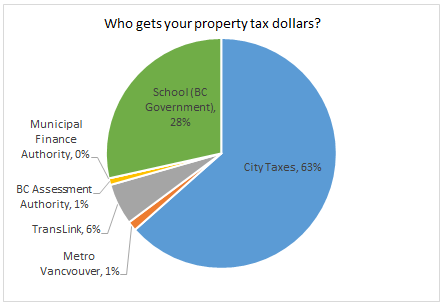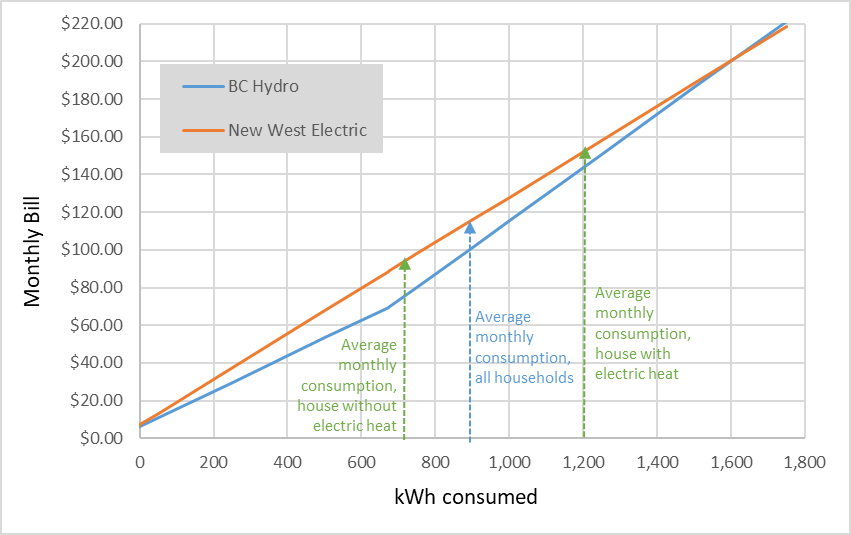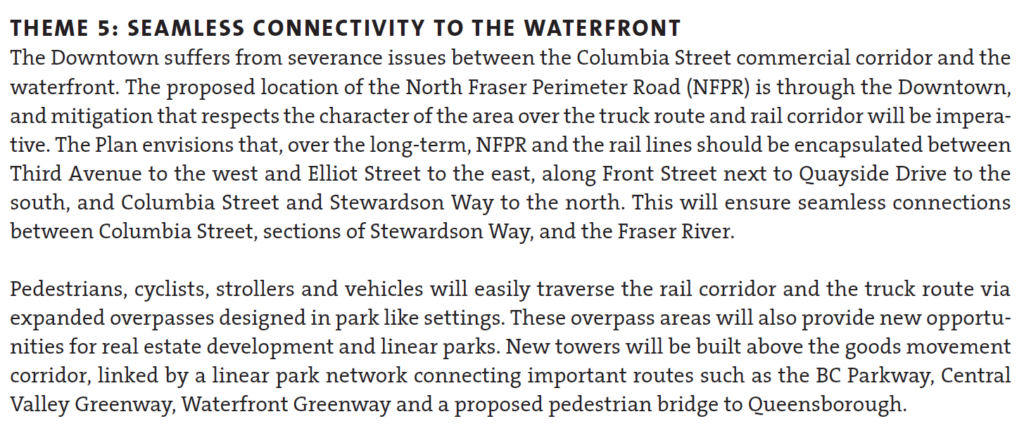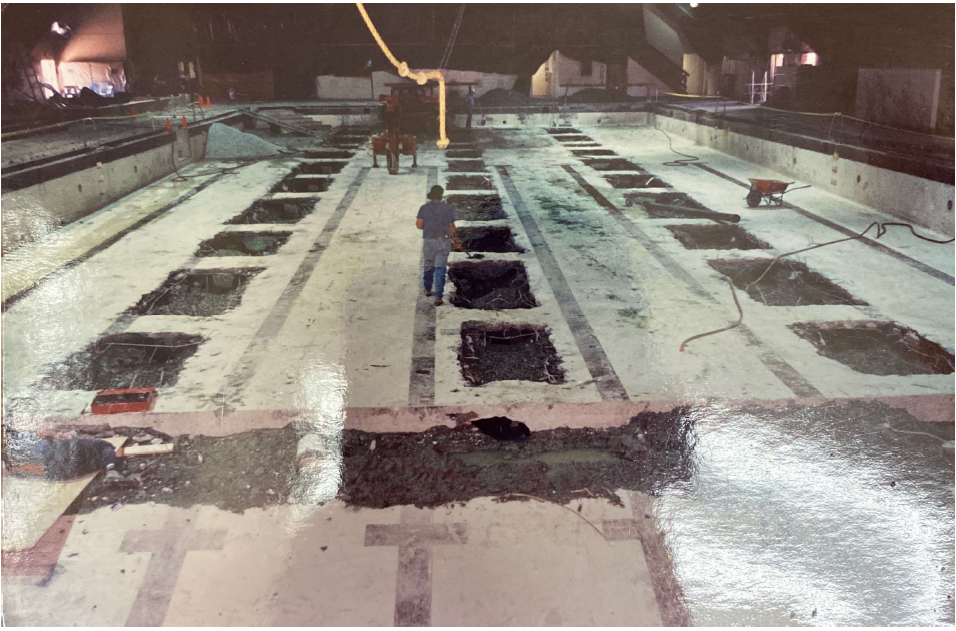This Council report is late. Because there is too much going on, and too much ugly news dragging me down. I’ve had a hard time finding the emotional energy to sit down and write this up. But it’s the last meeting for 2021, and we can put this doomscroll of a year into the books and move on to building good things in 2022.
We also had an afternoon workshop where we talked about the City’s response to the Opening Doors report, but that’s going to have to go I go in a different blog post, because boy I have opinions. The evening Council meeting started with a presentation of the Draft Budget 2022, which I will also have to delay to a longer stand-alone blog, because boy do I have opinions. So this blog will be reserved for the other things on the stuffed Agenda, starting with this presentation:
People, Parks & Pups – A 10-Year Strategy for Sharing Public Space
We have our first comprehensive city-wide strategy for dog parks and amenities for the something like 40% of the people in New West who have a dog. There is some good reading here, and it was a big body of work for Parks and Rec staff, with a multi-tier consultation to get us to this point which is a landmark for the City. The result is a framework for the next 10 years of work the City can do to make people and dogs better companions in our public space, including some short-term actions you will see in the year ahead.
We then passed the following items On Consent:
22nd Street Station Area: Bold Vision Work Plan
The City is going to re-launch the planning project for the 22nd Street station area. This is one of the things that got delayed by COVID, as planning staff were shifted to helping with pandemic response work supporting vulnerable populations and businesses. This is one of the few stations in the legacy Skytrain line that is still surrounded by single-family homes, and that is not consistent with the City’s or the region’s long-term growth vision. A rough outline of the densities imagines here was included in the OCP update a few years ago, but we are now thinking a little bolder.
The plan is to put this design and visioning exercise to a design competition, with hopes that we can see a landmark plan that will teach and inform the future of planning in the region. Initial ideas around this comprise a compact, transit-oriented, climate-focused, “eco-neigbourhood”. All of this tells me that we cannot achieve our goals with a traffic calmed or car-light community, but that there is an opportunity here to build a truly car free community. If we want to set a new standard, that is the path I could envision, and indeed the only one that achieves our stated goals of being net zero or positive impact on climate. This could be exciting, if we are brave enough to make it so.
Acting Mayor Appointments for January to October 2022
We trade off Acting Mayor duties, to cover for the Worship in case he cannot do the mayor-like things. I get February and March, so in case he slips out of town for Spring Break, I better update my Class 4 License.
Construction Noise Bylaw Exemption Extension Request: New Westminster Interceptor – Columbia Sewer Rehabilitation
This Project is delayed because of persistent heavy rain events, which cause surcharges in the sewer line (water pressure so high that it fill and overflows the pipe if given an opening) that prevent the work from happening. This is pretty disappointing, as the impacts of them being there are being felt even as they are standing around not doing the work that can get them out of there.
Covid-19 Task Forces: Update
Our regular task forces update: the exceptional work staff is doing to address the impacts of COVID and health restrictions on the various parts of the community.
DCC Expenditure Bylaw No. 8307, 2021
Development Cost Charges are money we collect from developers to pay for infrastructure needs related to population growth. Because they are strictly regulated, and must be spent on identified projects, a Bylaw is required to authorize spending the DC funds on the projects they are defined for.
About $500K of the $2M cost of the boundary Road Pump Station upgrade came from DCCs. About $250K in water main upgrades in Q’boro came from DCCs, as did $500K in transportation upgrades in Q’boro. On the Mainland, a little more than $200K in transportation improvements were funded through portions of 6 projects. $185K was applied to the debt from waterfront park land acquisition in Q’boro, and $360K for the same for the Pier Park purchase.
Downtown New Westminster BIA Extension: 2022 – 2025 – Revised
The BIA is a self-funded organization of the members. All downtown business owners pay a tax to the City that is transferred in whole back to the members for them to spend on business improvement initiatives of their choosing. Again, this is a provincially regulated process. Up to now, the BIA tax has been based on business frontage – paid based on in the linear feet of frontage for the lots. This makes sense if the primary expenditure of the BIA is streetfront improvements, but the BIA is a much more complex and dynamic organization now, and the way property development happens now values street front differently (with things like “air parcel rights” becoming more common).
On conversation between the BIA and City staff, it was decided to shift to a tax rate based on assessed value. This will not change the amount of money the BIA gets, only how the tax that funds it is distributed between their members.
Heritage Designation (125 Third Street) Bylaw No. 8306, 2021
The owner of this house in Queens Park wants to have it Designated, which is a higher level of protection than currently offered by the Queens Park HCA. This requires Bylaws that require a Public Hearing, so we are setting that up.
Heritage Revitalization Agreement: 802-806 Eighth Street and 809 Eighth Avenue – Preliminary Report
This project would see a heritage house in the Moody Park neighbourhood preserved, and a pretty unique stacked townhouse style development placed on some amalgamated lots. This represents a slightly unusual “missing middle” approach with stacked three-bedroom townhouses and single-level accessible studios integrated together, for a unique housing mix totaling 18 new units where there are currently thee houses. This is a preliminary report, and will go to Public Hearing, so I’ll hold my comments until then.
Metro 2040: Land Use Designation Amendment Requests
Surrey wants to make a few changes to the regional growth strategy. Two are minor and non-controversial. In the third, they wish to convert some farm lands outside the Urban Containment Boundary into warehouses in an expansion of the Campbell Heights light industrial area. This would represent a pretty significant shift in one of the region’s most powerful planning tools, putting pressure on farmland and green areas outside the UCB, for seemingly questionable regional benefits. They need some consent from the Regional Government to edit the Regional Growth Strategy in this way. As a City and a signatory to the RGS, we are sending them a note of concern about the inconsistency with regional plans around farm protection, green space protection, containment of the Urban footprint, and climate and environmental strategies for the region. Let’s see where this goes.
Metro Vancouver Integrated Liquid Waste and Resource Management Plan: Sewage Rate Allocation
We pay Metro Vancouver ($10.2 Million in 2021) to take our wastewater and treat it at the treatment plants. That cost is going up because the complexity, cost, and regulations around those plants is going up. The region wants to shift how they set that rate, and it will mean cities like New Westminster (Burnaby, Vancouver, a bit of North Van – essentially the “oldest” parts of the Metro region) that still have legacy Combined Flow sewers (where storm water is mixed with sewage and it all goes to the plant in one pipe) will pay more.
All cities with Combined Flow sewer systems are furiously working to separate the systems at some substantial cost. In New West in 2021 alone we are spending about $4M on sewer separation. Over the entire system, we are investing $27 per linear metre of sewer on rehabilitation and upgrades of sewers, and sewer separation represents the bulk of this spending. This is about 8x the regional average investment per linear metre. If we have to spend more to dispose of the water we collect, that will erode our ability to keep up this level of investment, meaning we will no longer be able to meet our goal of complete separation by Metro Vancouver’s timeline. So their “incentivizing” us to do sewer separation, they are eroding our ability to pay for it.
So we are asking them to reconsider.
Queen’s Park Farm Transition – Community Engagement Summary
The Queens Park petting zoo was closed by COVID, though discussion about the future of the site began before that, as standards for keeping and caring for livestock have changed and the operation of the Petting Zoo was going to have to change to keep up. So the City launched a public engagement process to help guide the decisions we are going to have to make about the space. We heard from hundreds of people through on-site engagement, Be Heard New West, workshops and on-line forums, surveys and other correspondence. Several themes emerged, from nostalgia about the petting zoo to concerns about animal welfare. There did seem to be a consistent desire to keep the area oriented towards agriculture and food systems education, and that animals should be a component of that. Parks staff will use this to guide some ideas for the upcoming season.
Recruitment 2022: Appointment of Committee Chairs and Liaisons
We are updating our Committee roles for the last year of the term. Read ‘em and weep.
Rezoning for Passive House Triplex: 817 St. Andrews Street – Preliminary Report
This is an interesting project in The Brow of the Hill that doesn’t fit neatly in any of our Zoning bylaws. It would turn a single house on a largish lot in to a triplex of three family-friendly units build to Passive House standard, which is about as efficient a building as you can build. This is a preliminary application, it will be interesting to see how it goes and how the community reacts to this type of modest density increase in a real mixed-density part of town. If you have opinions, let us know.
Update on the Implementation of the COVID-19 Booster Vaccination Program in New Westminster
Vaccination rates in New West are really high, and we have been lending City facilities to Fraser Health to make sure residents have as much access as possible. Now that we are into the booster cycle of the provincial vaccination program, we are looking at what role the City will play, aside from the ongoing drop-in clinics at Century House.
The following items were Removed from Consent for discussion:
Climate Action Key Performance Indicators: 2020 Baseline Data
Another Part of Climate Action and accountability. We committed to act, we set some aggressive goals, we burned Climate Action into our workplans for every department, and we integrated Climate Action into our budgeting process. But if we cannot measure our progress or be held accountable unless we have metrics. Adopting these metrics took a lot of work, because they need to be meaningful, they need to be measureable, and we need to know where our data is going to come from. For example, it would be great to ask that carbon from car exhaust is halved by 2030 compared to 2010 baseline, but we have no way directly to measure car exhaust generated in the City (can we fund a correlation spectrometer? Maybe put it in a geostationary satellite?), and we certainly don’t have accurate date going back to 2010. So we can find a way to measure that, or we need to find reliable proxies, or we need to set a different metric.
This report outlines the “Key Performance Indicators” we will be using to track, monitor, and report on our progress towards our climate goals. We will establish and update a Climate Action Report Card, and will update and adapt it as new metrics become available.
Multiculturalism Advisory Committee: International Holocaust Remembrance Day
The City will light up the Anvil Centre in Yellow to mark this memorial date. Still waiting for staff to bring us that policy on when and how we light up buildings, but until then, we’ll do it this ad hoc way.
Queensborough Historic Area Drainage Update
This is a update on engineering works ongoing to address the chronic minor flooding in a low-lying residential part of Queensborough, as came up in the last Council meeting. As drainage requires an integrated network, the preliminary works have included increasing drainage and pumping capacity around the periphery to the tune of $8 Million (some funded by DCCs, see above), and a measurable improvement in the system has been noticed. Now engineering has to get more into the middle of the area and address the many small ad-hoc “improvements” performed along property frontages, all on City lands (not private lands) but not done by the City. Many of them hinder the ability of the drainage system to convey storm waters efficiently. This means unregulated driveway widening, retaining walls build to “square” the open channel, and culverts of sub-standard design. The report was really just an update for our information.
Recruitment 2022: Library Board Appointments
We have also moved to appoint 5 new Library Board members for two-year terms. I am really grateful to community members who take on these volunteer roles and help guide policy for such an important facility two facilities in the community.
Signalized Intersection Policy
This has been an interesting bit of work Staff has done, working with the Sustainable Transportation Committee. The City has not had a signalized intersection policy to guide how we prioritize the many conflicting desires when a signalized intersection is installed or improved. Without policy guidance, these intersections tend to be designed based on local needs at the time, and don’t necessarily reflect the City-wide transportation goals or the priorities set out in our Master Transportation Plan. As such, unless the improvements are part of a bigger plan, Level of Service for drivers is probably over emphasized over pedestrian wait times (as one example).
The new policy now prioritizes the safety and comfort of pedestrians, the removing of accessibility barriers, considerations for bus efficiency and reliability, and will prioritize improvements in areas where we are trying to encourage active modes (greenways, around schools and SkyTrain station, etc.). This is good progress, and is part of what I think we need to see more of – integrating the Master Transportation Plan priorities into all City operations just as we do Climate Action priorities.
Social Inclusion, Engagement and Reconciliation Advisory Committee Terms of Reference
As we continue to right-size the advisory committee structures at City Hall, this is a new working committee designed to keep our reconciliation and social inclusion actions on track. Term of reference means we can have a committee now!
And we read some Bylaws, including adoption of the following:
Arts Commission Repeal Bylaw No. 8297, 2021
The Bylaw that shifts our Arts Commission and the Public Art Advisory Committee into a single entity, the Arts Advisory Committee, as discussed in our Nov 15 meeting, was adopted by Council.
Electrical Utility Amendment Bylaw No. 8303, 2021
Engineering User Fees and Rates Amendment Bylaw No. 8301.2021,
These Bylaws that set utility rates for 2022 was adopted by Council
Revenue Anticipation Borrowing Amendment Bylaw No. 8300, 2021
Our annual cash-flow-protection temporary borrowing Bylaw, as discussed in our Nov 15th meeting, was adopted by Council.
Heritage Revitalization Agreement (515 St. George St) Bylaw No. 8262, 2021
Heritage Designation (515 St. George St) Bylaw No. 8263, 2021
These Bylaws to allow heritage designation and a laneway house in Queens Park, as discussed at the Nov 22nd Public Hearing, were adopted by Council.
Heritage Revitalization Agreement (208 Fifth Avenue) Bylaw No. 8271, 2021
Heritage Designation (208 Fifth Avenue) Bylaw No. 8272, 2021
These Bylaws to allow heritage designation and an infill house in Queens Park, as discussed at the Nov 22nd Public Hearing, were adopted by Council.
Finally, we had Motion from Members of Council
Endorsement of the Fossil Fuel Non-Proliferation Treaty
WHEREAS the most recent Intergovernmental Panel on Climate Change (IPCC) report in 2021, Code Red for Humanity, confirmed that without radical reductions in carbon emissions this decade, temperature rises above 1.5 degrees Celsius would be inevitable and irreversible and the credible threat of unstoppable, self-accelerating global heating; and
WHEREAS changes in the City of New Westminster’s climate are already being felt, including the summer heat dome, a pattern of hotter/drier summers, increased exposure to wildfire smoke, and increased frequency and intensity of heavy rain which impacts food security, infrastructure and the well-being of the entire community; and
WHEREAS all members of our community will be impacted by the health and safety risks of fossil fuel expansion, but those impacts will be most particularly experienced by those who live with socioeconomic and health inequities—including low-income individuals and families as well as those experiencing homelessness—Black, Indigenous, and people of colour, youth, seniors, people with disabilities, and especially people who live at the intersection of these identities; and
WHEREAS the City of New Westminster declared a climate emergency with an accompanying plan of 7 Bold Steps, and is committed to a just energy transition to green infrastructure and industries that will create jobs and rapidly decarbonize our economy; and
WHEREAS a new global initiative is calling for a Fossil Fuel Non- Proliferation Treaty that would end new fossil fuel exploration and expansion, phase out existing production in line with the global commitment to limit warming to 1.5°C, and accelerate equitable transition plans,
THEREFORE IT BE RESOLVED THAT the City of New Westminster formally endorse the call for a Fossil Fuel Non-Proliferation Treaty; and THAT the City of New Westminster write to the BC Minister for the Environmental and Climate Change Strategy, the MLAs for New Westminster and New Westminster-Queensborough, the Federal Minister for Environment and Climate Change, the MP for New Westminster-Burnaby, and
THAT that the following motion be sent to the Lower Mainland Local Government Association:
WHEREAS the most recent Intergovernmental Panel on Climate Change (IPCC) report in 2021, Code Red for Humanity, confirmed that without radical reductions in carbon emissions this decade, temperature rises above 1.5 degrees Celsius would be inevitable and irreversible and the credible threat of unstoppable, self-accelerating global heating; and
WHEREAS climate crisis impacts are already being felt in our communities, including the summer heat dome, a pattern of hotter/drier summers, increased exposure to wildfire smoke, and increased frequency and intensity of heavy rain which impacts food security, infrastructure and the well-being of the entire community;
THEREFORE IT BE RESOLVED THAT LMLGA formally endorse the call for a Fossil Fuel Non-Proliferation Treaty; and
THAT this motion be sent to UBCM for endorsement.
That’s a lot of words, but in essence, we are signing on to the call for the end of fossil fuel expansion with many cohort communities in the Lower Mainland and across Canada, and are using our lobbying power to senior government to amplify that call.
And that was the last meeting of 2021. I will try to get to writing up a bit about those two topics I skipped a bit above, and clearing the queue of unanswered ASK PATS that is getting a little embarrassing, over the holidays. Be careful out there, find joy in spending time with the people closest to you, and lets all think of the good things we can do in 2022.
 All residential properties went up 13.1 %, but Single Family Detached houses went up more than this (21%) and Condos went us much less (8.2%).Since tax increases are based on the average value, this means taxes will be going up more for most SFD, and less for most Condos. Indeed, at the current proposed rate, the average Condo may not see any increase at all.
All residential properties went up 13.1 %, but Single Family Detached houses went up more than this (21%) and Condos went us much less (8.2%).Since tax increases are based on the average value, this means taxes will be going up more for most SFD, and less for most Condos. Indeed, at the current proposed rate, the average Condo may not see any increase at all.






